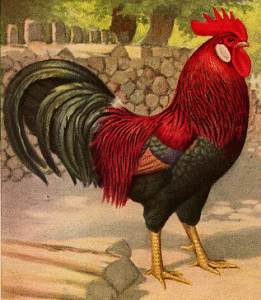Chickens have played a central role in cancer research. The first tumor viruses were discovered by Bang and Ellerman in the early 1900s as “filterable agents” (i.e. things that were smaller than bacteria) that caused leukemia and lymphoma in chickens. A few years later, Rous discovered a virus in chickens which caused solid tumors called sarcomas. Both of these viruses were shown to have RNA rather than DNA as their genetic material. Therefore, they became known as “RNA tumor viruses”. In the late 1950s Temin and Rubin showed that such viruses could be quantitatively studied in cell culture– Rous sarcoma virus could cause cancer-like foci of “transformation” in a dish of normal chicken cells. Because transformation was stably inherited in infected cells, Temin proposed that RNA tumor viruses converted their genomes into DNA and integrated into the cellular DNA. This heretical proposal went against the “central dogma” of molecular biology that “DNA makes RNA makes protein”. However, Temin was eventually proven right when his own lab and David Baltimore independently demonstrated the existence of a viral enzyme called reverse transcriptase that could convert RNA into DNA. Because of this “backwards” flow of information. These viruses then became known as “retroviruses”. Evidence from several laboratories in the 1970s demonstrated that Rous sarcoma virus had an “extra” gene that was not required for viral growth, but was required for oncogenic transformation. Such genes became known as “viral oncogenes”. Perhaps the biggest surprise came in the mid-1970s when Stehelin, Varmus, Bishop, and Vogt demonstrated that the viral oncogene of Rous sarcoma virus (v-Src) had actually been captured from a normal cellular “proto-oncogene” (c-Src). Furthermore, a closely related gene was also found in humans. Other viral oncogenes of cellular origin were then identified including v-Myb of the avian myeloblastosis virus. In the 1980s it was shown that these cellular “proto-oncogenes” could be converted to active oncogenes by various means including chemical mutagenesis, viral insertional mutagenesis, gene amplification, and chromosomal rearrangement. In particular, a number of these genes were found to be consistently activated by mutations in specific types of human cancer. Such genes are therefore the targets of intensive research for improving the diagnosis and treatment of human malignancies.
